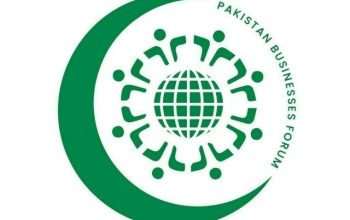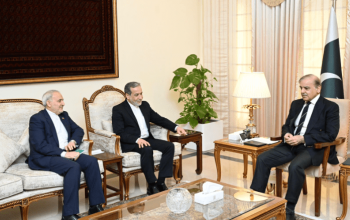Inflation remained stubborn, inching up to 29.7% last month due to a constant increase in prices of food and energy goods, surpassing official expectations for a slowdown in the pace of price increases.
The Pakistan Bureau of Statistics (PBS), the national data-collecting agency, reported on Monday that the Consumer Price Index surged to 29.7% in December compared to a year ago. The increase contradicted the expectations of the government, the central bank, and the market for a decrease in the rate. Last month, the State Bank of Pakistan had stated that, barring a significant increase in administered prices, it “continues to expect that headline inflation will decline significantly in the second half of fiscal year 2024 due to contained aggregate demand, easing supply constraints, moderation in international commodity prices, and a favourable base effect.”
The finance ministry had also anticipated a moderate slowdown in the prices of goods and services in December. For many years, the forecasts of the federal government and the SBP have proven incorrect. Price stability is now the sole primary objective of the SBP after it was granted autonomy in January 2022 under the International Monetary Fund diktat.
The inflation rate surged both in urban and rural areas, according to the PBS. Last month, the prices of food and energy items saw a further increase in both rural and urban areas. The prices of fresh vegetables were three-fourths higher than the previous year, which was unusual. Usually, perishable food items are reduced in winters.
On the back of an alarming increase of up to 520% in gas prices during the first round, the overall inflation rate kept increasing across the country. It increased to 31% in the cities and 28% in the rural areas.
There was a massive increase in non-food inflation in urban areas that surged to 32.4%, while it jumped to 26.4% in rural areas. Items like wheat flour, rice, tea, sugar, beverages, potatoes, and pulses saw a significant increase in their rates last month compared to a year ago.
The food inflation decelerated in cities but marginally increased in rural areas. In urban centres, it increased to 28.8%, and in villages and towns, it increased to 29.3%, according to the PBS. Wheat flour prices were higher by 59%, sugar prices were up by 50% compared to a year ago, while the rates of other edible items were also higher in the range of 20% to 50%.
A recent meeting of the Economic Coordination Committee of the Cabinet revealed that the provinces of Sindh and Balochistan were not effectively monitoring the price trends.
People’s purchasing power has significantly reduced in the past couple of years due to constant double-digit increases in prices. During this period, successive governments also significantly increased the tax burden, particularly for the salaried class.
Read Inflation surges again, reaches record highs
However, core inflation, which is calculated after excluding the volatile energy and food prices, slowed down to 18.2% in urban areas and 25.1% in rural areas but still far above the central bank’s interest rate.
The prices of food and non-alcoholic beverages were higher by nearly 28% last month compared to a year ago. The prices of non-perishable goods saw a 28.7% increase, while the ratio was 21% for perishable goods.
The inflation rate for the transport consumer price group was up by 28.6% despite a reduction in fuel prices.
It seems that the government may again miss its annual inflation target of 21%. The PBS reported that for the July-December period of the current fiscal year, the average inflation remained at 28.8%. This was far higher than the official target of 21% for the current fiscal year.
The average inflation rate for the first six months in rural areas was 30%, whereas it was 28% in urban areas. The central bank’s hope is that the rate would soon dip below 20% on the back higher inflation rate during the second half of the last fiscal year, what it calls the “favourable base effect.”
However, the government has also committed with the IMF to further increase the gas prices with effect from January. This may partially dent the hopes for a significant reduction in the inflation rates. The PBS data showed that gas prices were already higher by 520% in December compared to a year ago. Similarly, electricity charges were also higher by 61.6% compared to a year ago.
For the past many years, the SBP has failed miserably in containing inflation through monetary tightening despite keeping interest rates high. Its policies have inflicted heavy budget losses in the shape of a sharp rise in the cost of interest payments that are now estimated at Rs8.627 trillion by the IMF, equal to 92% of the FBR’s projected revenues. During the first five months (July-November) of this fiscal year, the finance ministry paid Rs2.92 trillion in terms of the cost of debt borrowed for budget financing. The high-interest rates have neither slowed down the pace of inflation nor did it help to get foreign inflows.
Published in The Express Tribune, January 2nd, 2024.
Like Business on Facebook, follow @TribuneBiz on Twitter to stay informed and join in the conversation.
Read the full story at the express tribune website.


